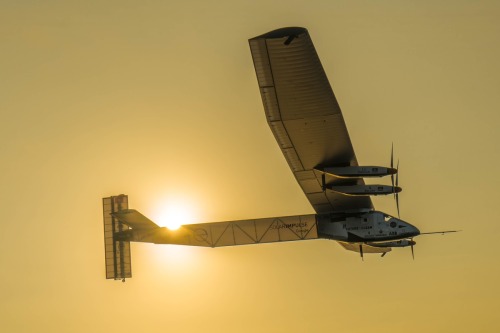Solar Impulse re-enters ‘Mission Mode’
Thursday 14th April 2016Before every great takeoff, there is a moment of hesitancy, -of trepidation, -of uncertainty. That might perturb some, but it is this sensation that the Solar Impulse team lives for. Now, we are stepping forward and have truly entered “Mission Mode.”
You might be wondering where Solar Impulse is at-and what’s going to happen next? The past two months have been filled with preparations: maintenance and training flights. We have completed both Bertrand Piccard’s last high altitude flight and André Borschberg’s last training flight these past two weeks. Now our pilots are fully prepared to take on the next big challenge: the flight from Hawaii to North America.

The past eight months have exemplified the team spirit, embracing setbacks and seeing them as opportunities. After replacing the batteries that overheated during the flight from Nagoya to Hawaii, the countdown has now started for the Solar Impulse team to finish what they started, and head back to their departure point: Abu Dhabi.
Last year, we conquered the skies with the sun’s power from Abu Dhabi, across Oman, India, Myanmar, China, and Japan until reaching Hawaii. Soon, we will attempt to complete the circumference of the earth, from Hawaii, over the Pacific Ocean, across North America, over the Atlantic Ocean, and across Europe or North Africa, finally landing in Abu Dhabi once again.
Weather allowing, we could take-off for our flight over the Pacific Ocean soon. I’m sure you have never had a job that depends on the weather so much, huh? As we all know, the weather can change at any minute, so our engineers at the Mission Control Center in Monaco are busy searching for a weather window. What exactly does that entail?
Finding a weather window is the outcome of a tight collaboration between:
our Air Traffic Control (ATC) team;
our meteorologists;
our mission engineers;
and the ALTRAN team that executes flight simulations.
They all work together to identify the best possible options to fly. ALTRAN, a Solar Impulse partner, has provided us with a software that illustrates Si2’s flight path through forecasted weather conditions and ATC routes in order to evaluate whether the aircraft can fly while identifying the path Si2 should follow. If the flight path is clear until the final destination, the aircraft can safely proceed to its landing point.

At Solar Impulse, we are opportunists in the sense that we always take advantage of weather windows that provide clear flight paths for Si2 to fly. The first Mission Flight of this year will be long, lasting several days in order to cross the rest of the Pacific Ocean from Hawaii to North America. Before takeoff, our team undergoes regular simulations in order to receive the most accurate weather forecast during the flight. It is only a few hours before the flight that we can fully confirm it will take place. This state of unknown lasts until the aircraft has taken off and reached the point of no return and is what ultimately motivates all Solar Impulse members, enabling us to become closer than a team: a family.
We have prepared a lot of interesting information for you that will be released in the coming days, leading up to the upcoming flight over the Pacific Ocean. To start with, here is a video about Solar Impulse’s time in Hawaii!
We will surely take the first possible opportunity to resume our adventure and will let you know as soon as an opening comes up! If you haven’t already, subscribe here to make sure you receive our updates.



